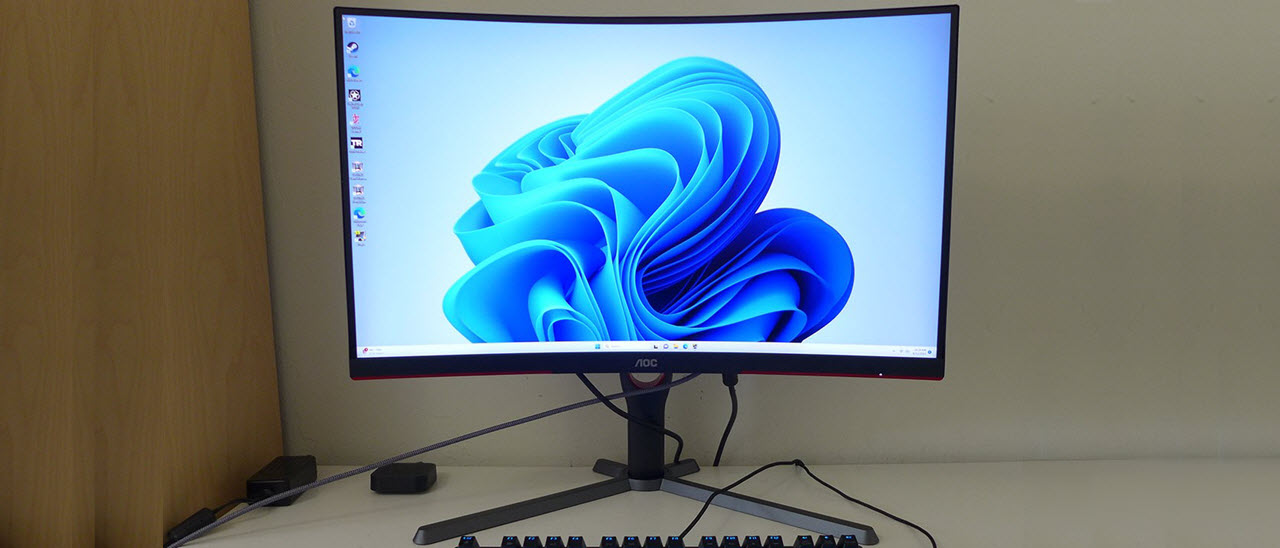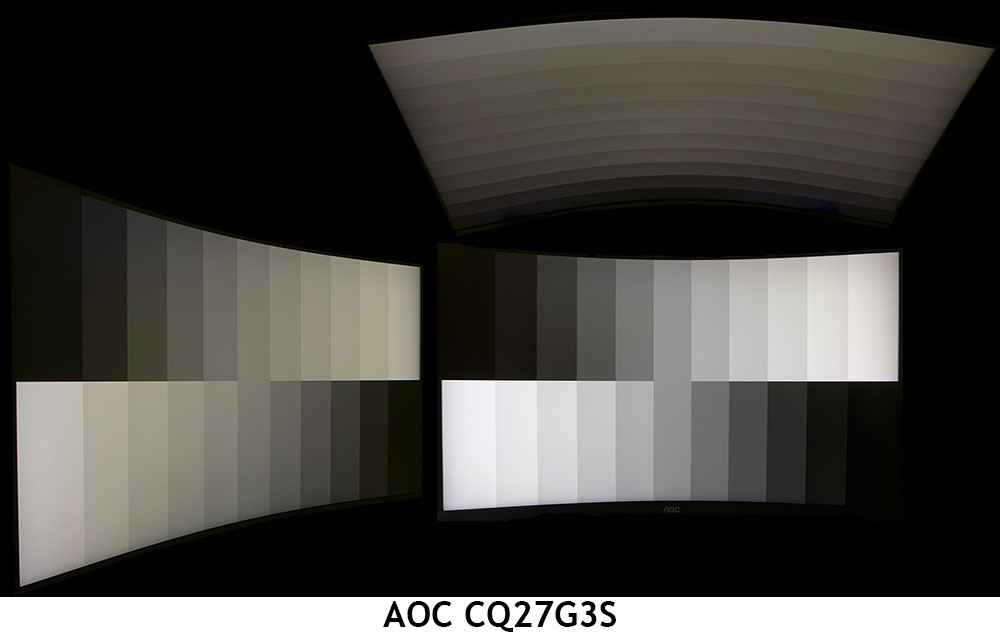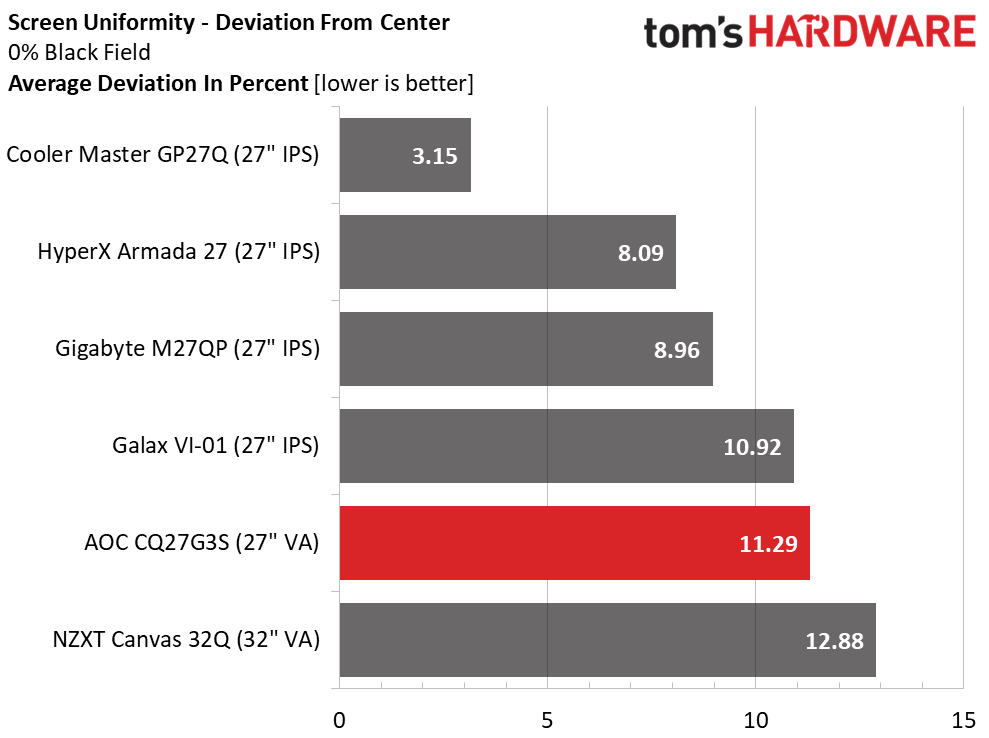Why you can trust Tom's Hardware
To see how the AOC CQ27G3S’s performance stacks up, I’ve rounded up a group of 165/170 Hz QHD screens that offer similar features. We have Cooler Master’s GP27Q, Galax’s VI-01, Gigabyte’s M27QP, HP’s HyperX Armada 27 and the NZXT Canvas 32Q.
Pixel Response and Input Lag
Click here to read up on our pixel response and input lag testing procedures.
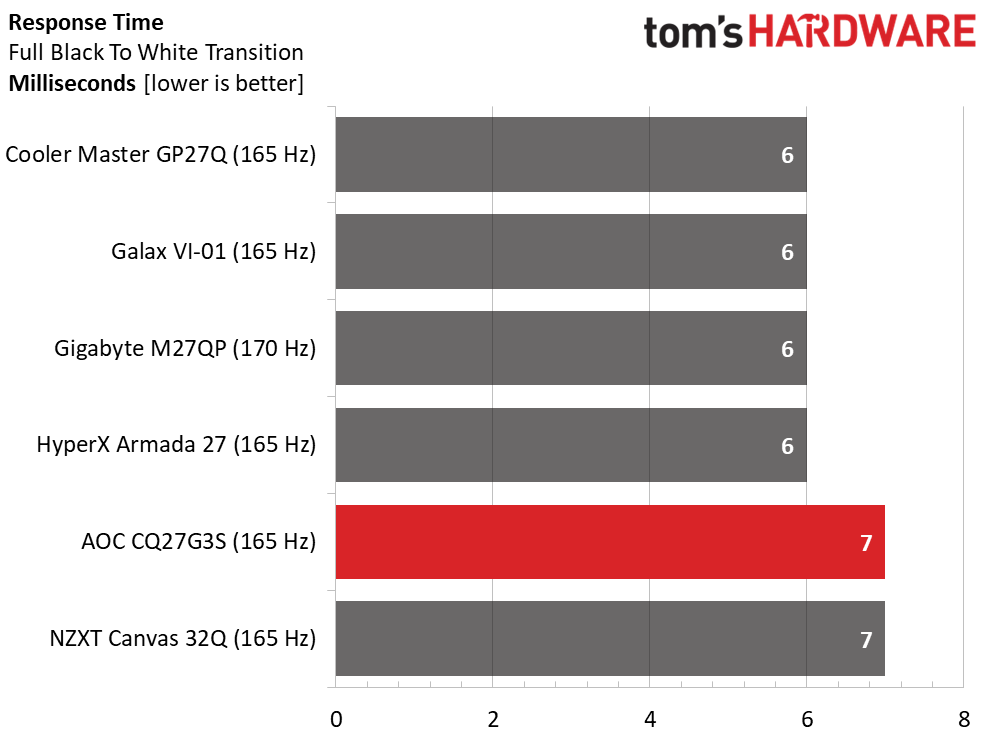
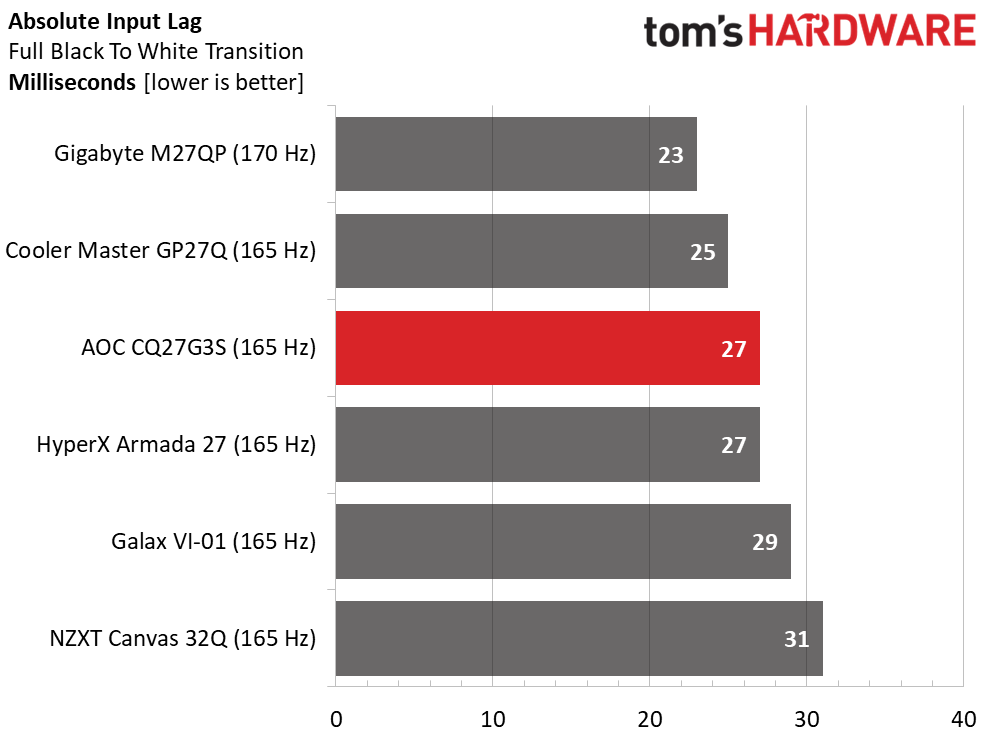
Most 165 Hz screens draw a full white frame in 6ms but a few take 7ms to complete the task. The visual difference is small but the CQ27G3S is a tad less smooth than the top four monitors. This isn’t helped much by its weak overdrive which exhibits undershoot. That means you’ll see slight black trails behind moving objects.
It makes up some ground with very low input lag. 27ms isn’t quite at the professional esports level but it is fairly quick for the category. Casual gamers will have no complaints about precision. It should be noted that the CQ27G3S is the least expensive screen of the bunch.
Test Takeaway: The CQ27G3S could use a better overdrive to mitigate black trail artifacts but among other value-oriented 165 Hz screens, it holds its own. You can use the MBR blur reduction feature as a viable alternative to Adaptive-Sync as it offers slightly better motion resolution. With low input lag, it provides a solid gaming feel and experience.
Viewing Angles
When compared to other VA panels, the CQ27G3S has average off-axis image quality. At 45 degrees to the sides, light output drops by 30% and there is a visible shift to green. Gamma stays true though, so you won’t have trouble seeing fine highlight and shadow detail.
From the top, the picture is much darker and washed out. Detail will be much harder to resolve when looking down. At 27 inches, the CQ27G3S isn’t a great candidate for sharing.
Get Tom's Hardware's best news and in-depth reviews, straight to your inbox.
Screen Uniformity
To learn how we measure screen uniformity, click here.
My CQ27G3S sample showed generally good uniformity when displaying a full black pattern but I could see faint hotspots in the upper corners of the screen. They aren’t a factor in content unless you are viewing very dark material. The center, sides and bottom were fine in my observation, so I don’t consider this result a deal-breaker.
MORE: Best Gaming Monitors
MORE: How We Test PC Monitors
MORE: How to Buy a PC Monitor
MORE: How to Choose the Best HDR Monitor
Current page: Response, Input Lag, Viewing Angles and Uniformity
Prev Page Features and Specifications Next Page Brightness and Contrast
Christian Eberle is a Contributing Editor for Tom's Hardware US. He's a veteran reviewer of A/V equipment, specializing in monitors. Christian began his obsession with tech when he built his first PC in 1991, a 286 running DOS 3.0 at a blazing 12MHz. In 2006, he undertook training from the Imaging Science Foundation in video calibration and testing and thus started a passion for precise imaging that persists to this day. He is also a professional musician with a degree from the New England Conservatory as a classical bassoonist which he used to good effect as a performer with the West Point Army Band from 1987 to 2013. He enjoys watching movies and listening to high-end audio in his custom-built home theater and can be seen riding trails near his home on a race-ready ICE VTX recumbent trike. Christian enjoys the endless summer in Florida where he lives with his wife and Chihuahua and plays with orchestras around the state.
